Before 2300 BC, the plain between the Tigris and Euphrates rivers was divided into city-states. As is often the case when such a circumstance occurs, these cities warred with each other from time to time, usually to seize resources. Sumerian cities did not have standing armies, but relied on the formation of citizen levies in order to go to war. A typical army of the time could range between 800 and 1,000 combatants. Thanks to the discovery by Sir Leonard Woolley of the Royal Standard of Ur in the royal tombs of that city, we know that a Sumerian army based its strength on the phalanx. The infantrymen protected themselves with leather helmets and carried spears of up to 3 meters in length with a bronze or copper tip, the latter being more common, since bronze was expensive and not all cities could have large quantities of said metal. Shields are thought to have been made of wicker and covered with leather. The tactic was simple:the two enemy phalanxes, of an indeterminate number of ranks, faced each other and collided shield against shield and spear against spear. The winner was the one who endured the longest without losing formation or the most skillful when it came to sticking the spear into the opponent. The best protection against this tactic consisted of leather cloaks, reinforced with bronze plates, with which the infantrymen were covered, although perhaps not all. Only chiefs and leaders wore, for example, bronze helmets.

Banner of Ur
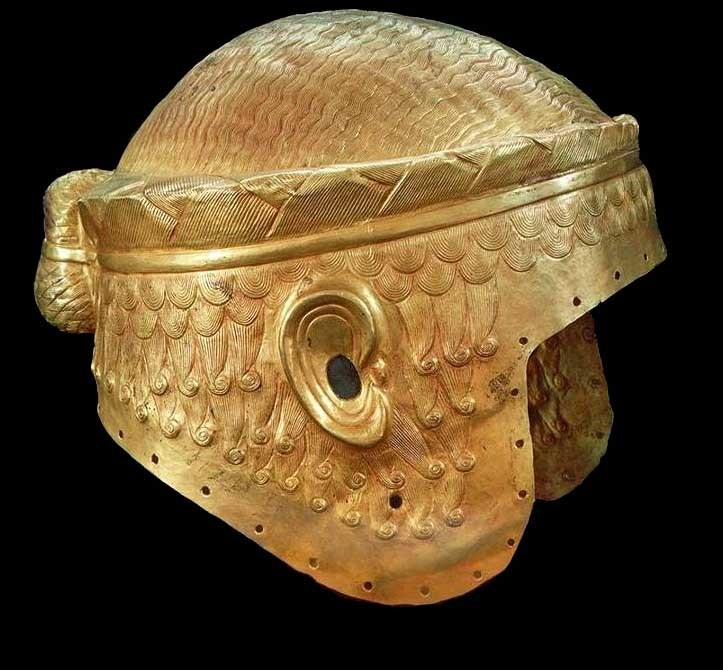
Along with the infantry, we know that archers acted, although in small numbers, since the Sumerian bows, built with date palm wood, were not very powerful, and being citizen levies they should not have been very professional. More effective than the archers were the slingers, who acted as marauders harassing the flanks of the enemy phalanx. The most appreciated, it is not known why, were those from Eridu and Nippur. Finally, in the Royal Standard of Ur we see some war chariots, four-wheeled and drawn by onagers. Modern reconstructions have shown us that they were slow and difficult to maneuver, so it is assumed that they only served as an ostentatious element and, perhaps, to pursue the enemy already in defeat.
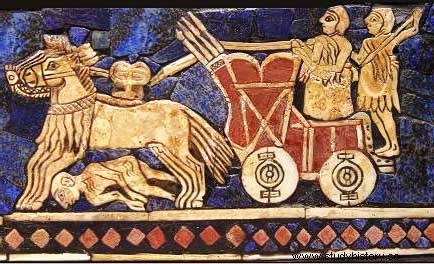
And it is at this moment, in full swing of the city-states, when a character appears who revolutionizes the plain of the two rivers:Sargón de Akhad . According to autobiographical texts he was Akkadian, the son of a priestess, a single mother, who had abandoned him in a basket in the river. The basket was found by a gardener of the king of Kish, who adopted it and introduced it to the royal court -if this story sounds familiar to anyone, I must warn you that any resemblance to coincidence is pure... reality). Years later he was appointed cupbearer to the king and, after the usual coup, he usurped the throne. Once he became the monarch of Kish, he carried out various reforms of the army and the simple military tactics of the time.
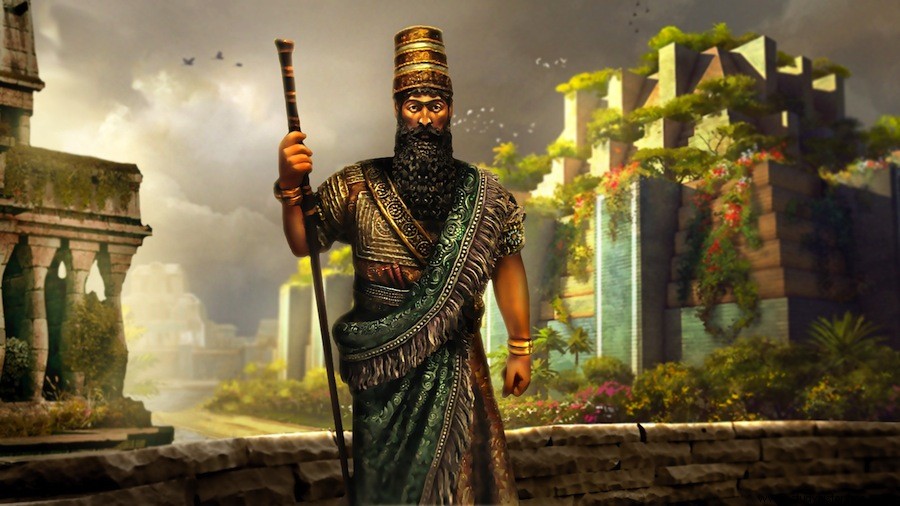
Sargon of Akkad
The first reform was to create a professional army. In one of the texts he boasts of having in the Akkadian capital ( Agade ) to 5,000 professional soldiers, whom he feeds and pays out of his own pocket. This allowed him, on the one hand, to ensure the loyalty of these soldiers, and on the other hand, to dispose throughout the year of a respectable number of professional and trained warriors that quintupled the number of the usual citizen detachments. Every time he conquered a city, he stationed a small Akkadian garrison there, which in addition to acting as a veiled warning to the newly-and possibly unhappy-conquered, allowed him to better control the training of the citizen levies. In total it is estimated that the Akkadian army, under the reign of Sargon, could reach 35,000 troops, a whole "Grande Armée ” of the time.
As for weapons, the reform was also extensive, even affecting military tactics. Sargón maintained the use of the phalanx of infants covered with reinforced cloaks, yes, being more professional for having undergone in-depth training. To the Sumerian spears he added the siparru . This weapon, which was used before by Sumerian leaders and generals, is what we commonly know as a "sickle-sword". It was built of bronze, which meant having a large amount of said metal, which is why Sargon hurried to conquer the mountainous part of Elam, on the current border between Iraq and Iran, which was rich in copper and tin mines. Although it is called a "sword", it was not actually used as such. The fencing movements of the Dothraki , which we see in the popular series “Game of Thrones”, were not only useless with it, but even dangerous for the wearer. The siparru , and in general sickle-swords of all kinds, were used to hook the opponent's shield and uncover his throat, allowing a companion to make a personal allusion with the spear. Another more direct use was to slaughter the careless on duty with it.
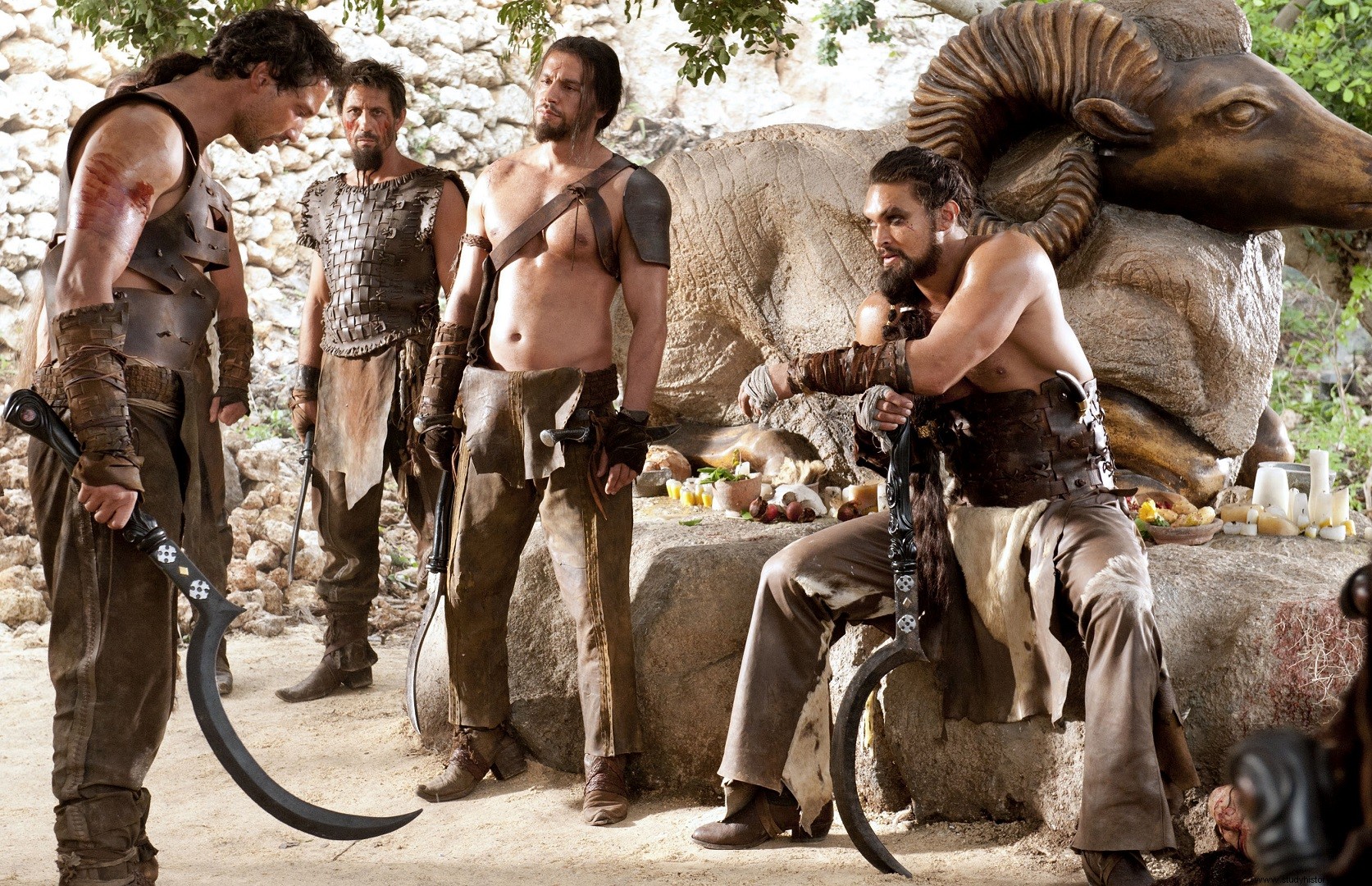
In addition to the siparru , Sargon massively introduces the compound bow, known long ago by the Akkadian Semitic nomads. It was built with sheets of strong wood, reinforced on the outside of the blades by animal tendons and, on the inside, by pieces of animal horn. All this was joined by a special compound glue, that we know from boiled tendons and fish skins. Unlike the Sumerian bow, which should not reach 30 or 35 pounds of power, the composite bow easily exceeded 55, which, together with a bronze tip, allowed it to pierce the reinforced cloaks of the Sumerian infantry. Thanks to this weapon, the Akkadian phalanx advanced towards the enemy supported by a strong contingent of archers who fired volleys of arrows at the enemy from their rear, breaking their formation and producing a good number of casualties before the clash between infantrymen. Of course, the archers also become, by necessity, highly qualified professionals. To be able to shoot an appreciable number of arrows during a battle, with such a powerful bow and with guarantees of precision and speed, years of dedication, training and physical strength are required.
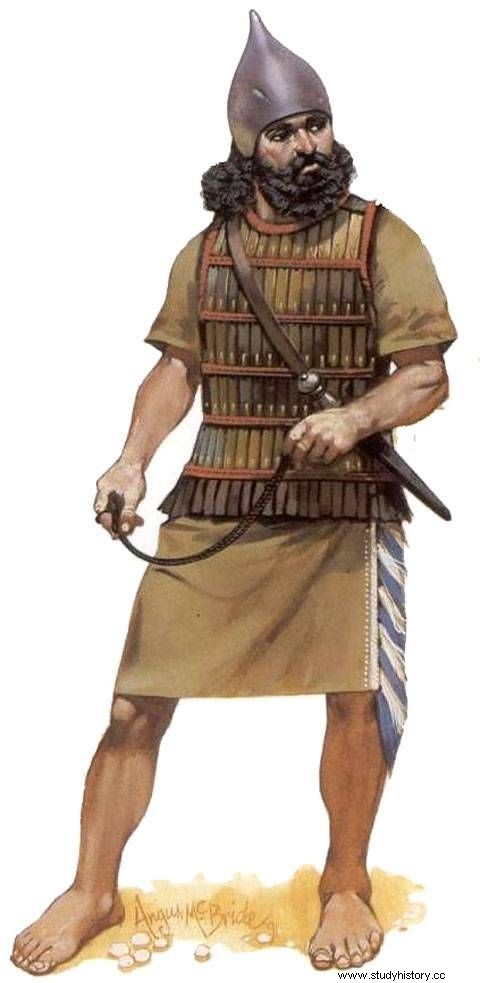
Other additional elements used by the Akkadian army were the increase in the number of slingers, who were no longer used as marauders but added their projectiles to the volleys of arrows, and the use of siege techniques to bring down walls. We can, therefore, get a good idea of how Sargon could become the invincible conqueror of the Mesopotamian chronicles. A citizen levy could hardly face that military cyclone that fell on him. Some of the battles are even described as "short-lived", perhaps just a clash followed by a general rout.
Finally, the Akkadian monarch adopted the custom of recruiting the vanquished. Until then, when two Sumerian cities clashed, the defeated soldiers could be directly pardoned, limited to returning home (rarely), executed on the same battlefield (most commonly), or enslaved ( sometimes). Sargon pardoned the vanquished and immediately enlisted them in a professional regiment. This not only increased the number of troops in his army, but those defeated, seeing their livelihood assured, as well as a new way of life more comfortable than the previous one, became the most faithful and dedicated professional soldiers. It is often said that there is no greater fanatic than the recent convert.
This huge and perfectly trained army made Sargon go from being "King of Kish" to "Lord of the Four Zones of the World", extending his domains from the modern border between Iran and Iraq to the current south of Turkey and, for the west, possibly to the island of Cyprus. However, everyone has a bad day or an Achilles heel and, in time, the fearsome Akkadian army would find its Vietnam in a bloody and terrible military campaign, Lubulli
